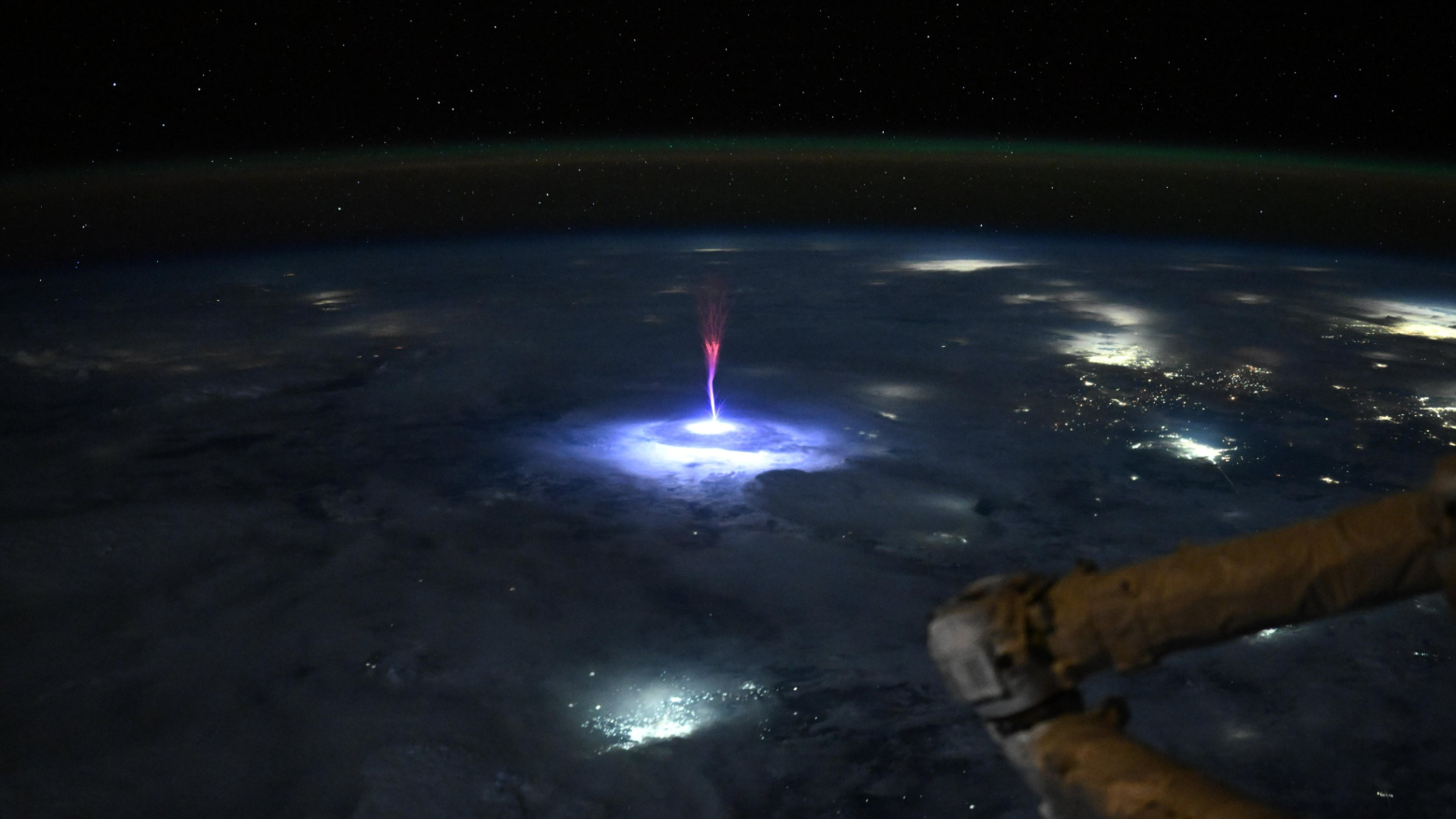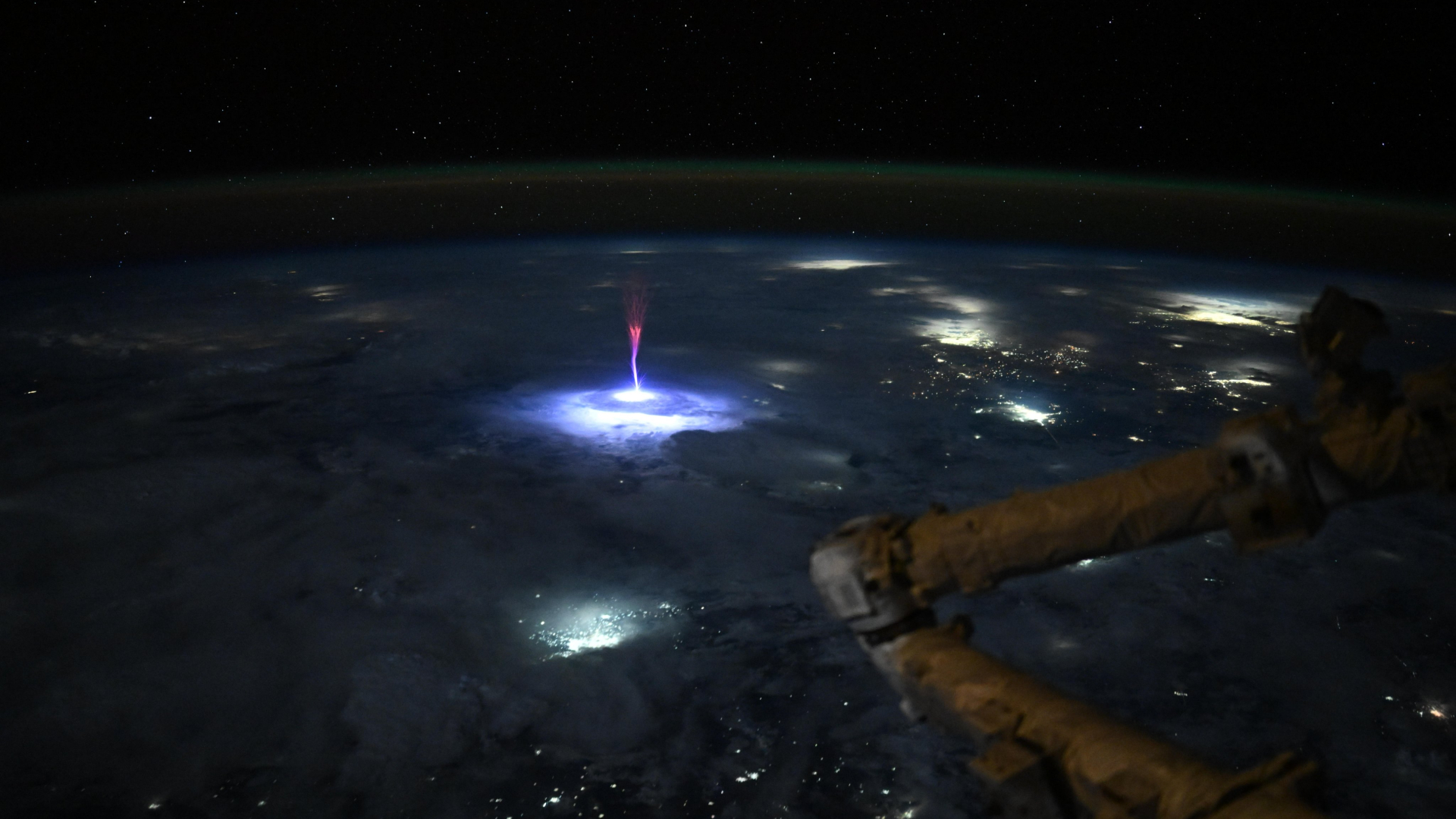
U.S. astronaut Nichole "Vapor" Ayers captured a spectacular view of a phenomenon known as a "sprite" blazing to life above an intense thunderstorm — and she did this while orbiting 250 miles (400 kilometers) above Earth aboard the International Space Station (ISS).
"Sprites are TLEs or Transient Luminous Events, that happen above the clouds and are triggered by intense electrical activity in the thunderstorms below," wrote Ayers in an X post showcasing the image. "We have a great view above the clouds, so scientists can use these types of pictures to better understand the formation, characteristics, and relationship of TLEs to thunderstorms."
Just. Wow. As we went over Mexico and the U.S. this morning, I caught this sprite.Sprites are TLEs or Transient Luminous Events, that happen above the clouds and are triggered by intense electrical activity in the thunderstorms below. We have a great view above the clouds, so… pic.twitter.com/dCqIrn3vrAJuly 3, 2025
Vivid, multicolored sprites are among the least understood and visually striking electrical phenomena known to manifest in Earth's upper atmosphere during intense thunderstorm events. They typically occur roughly 50 miles (80 km) above the planet's surface in the wake of powerful lightning strikes, taking on an array of otherworldly shapes composed of complex, tendril-like features and plumes of red light, according to NASA.
Even so, the gigantic sprite Ayers managed to witness is a particularly impressive specimen, seen rising high above lightning-lit clouds and treading into Earth's upper atmosphere above Mexico and the U.S. All the while, the sprite appears to glow brightly alongside artificial light emanating from the cities below.
Over the past few years, NASA has been working on the "Spritacular" citizen science project, which asks members of the public to contribute images of TLE sightings in an attempt to provide the scientific community with data that can be used to decode the phenomenon.

These efforts are now being bolstered by orbital footage of the spectacular events, including by multiple astronauts aboard the ISS, who — like Ayers — have embraced photography as a creative outlet during their time on the station.
Many questions certainly persist surrounding the nature of sprites, how and why they form and how they interact with the surrounding atmosphere — but maybe they'll have some answers soon.
Editor's Note: If you capture an image of a sprite or TLE and want to share it with Space.com's readers, then please send your photo(s), comments, and your name and location to spacephotos@space.com.







